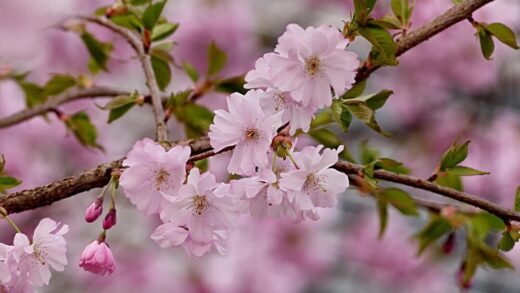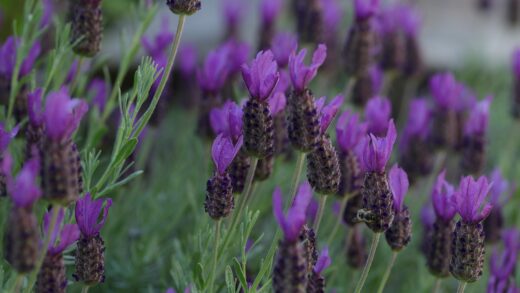Light is the single most important environmental factor for the health, growth, and fruiting of a lemon tree, as it is the primary source of energy for the plant. Lemon trees are native to subtropical and tropical regions, where they have adapted to thrive in conditions of high light intensity and long daylight hours. To successfully cultivate a lemon tree, especially in a non-native climate, it is crucial to replicate these light conditions as closely as possible. Fulfilling the tree’s high demand for light is fundamental to every aspect of its life, from photosynthesis to the development of flowers and the ripening of fruit.
For a lemon tree to truly flourish, it must receive a minimum of six to eight hours of direct, unfiltered sunlight every day. This is not a mere suggestion but a core requirement for the plant’s metabolic processes. Photosynthesis, the process by which the tree converts light energy into chemical energy in the form of sugars, is entirely dependent on adequate light. These sugars are the fuel for all of the tree’s functions, including producing new leaves, strengthening branches, and, most importantly for many growers, creating and maturing a crop of lemons.
The placement of the tree, whether it is in a garden or a container, should be carefully chosen to maximize its exposure to the sun. In the Northern Hemisphere, a south-facing location is ideal as it provides the most direct and prolonged sunlight throughout the day. An east-facing location can provide good morning sun, while a west-facing spot offers strong afternoon sun. A north-facing location, however, will almost certainly not provide enough direct light for a lemon tree to be productive.
It is also important to consider potential obstructions that could cast shadows on the tree during the day. Buildings, larger trees, or fences can significantly reduce the amount of direct sunlight the lemon tree receives. When planting in the ground, observe the path of the sun across the chosen spot for a full day to ensure it will receive the required duration of light. For container-grown trees, this is less of a permanent issue, as the pot can be moved to follow the sun or to a new, sunnier location as needed.
The role of photosynthesis
Photosynthesis is the cornerstone of a lemon tree’s existence and is directly fueled by light. During this complex biochemical process, the tree uses the energy from sunlight to convert carbon dioxide from the atmosphere and water from the soil into glucose (a type of sugar) and oxygen. The glucose serves as the tree’s primary energy source, powering its growth and all of its metabolic activities. The efficiency of this process is directly proportional to the intensity and duration of the light the tree receives.
More articles on this topic
The green color of a lemon tree’s leaves comes from a pigment called chlorophyll, which is the molecule responsible for capturing light energy. When a tree is deprived of sufficient light, it cannot produce an adequate amount of chlorophyll, which is why the leaves of a light-starved plant often appear pale green or yellow. This reduction in chlorophyll leads to a decrease in the rate of photosynthesis, effectively starving the tree of the energy it needs to maintain its health and grow properly.
The energy generated through photosynthesis is allocated to various functions within the tree. A portion is used for basic maintenance and respiration, keeping the existing cells alive. The rest is invested in new growth, such as producing new leaves, roots, and branches. A significant amount of energy is also required for the demanding processes of flowering and fruiting. If the tree is not producing a surplus of energy through photosynthesis due to poor light conditions, it will not have the resources to initiate blooms or to develop fruit to maturity.
Therefore, when a lemon tree fails to flower or constantly drops its young fruit, insufficient light is one of the most likely culprits. The tree, in a state of energy deficit, will prioritize its own survival over reproduction. It simply cannot afford the immense energy expenditure required to produce fruit. Providing the tree with abundant sunlight is the most direct way to boost its energy production, which is a prerequisite for a bountiful harvest.
Symptoms of insufficient light
A lemon tree will exhibit several clear and distinct symptoms when it is not receiving enough light. One of the most common and earliest signs is etiolation, or leggy growth. The tree will stretch its branches and stems, making them unusually long and thin, with large gaps between the leaves. This is the plant’s instinctive attempt to reach towards a perceived light source. This type of growth is weak, structurally unsound, and more susceptible to breaking and pests.
More articles on this topic
Leaf-related symptoms are also a primary indicator of light deficiency. The leaves may be smaller than normal or have a pale green or yellowish color, a condition known as chlorosis. This is a direct result of the tree’s inability to produce enough chlorophyll in low-light conditions. In more severe cases of light deprivation, the tree will begin to shed its leaves, usually starting with the older, lower ones. This is a survival mechanism to reduce its energy needs by supporting fewer leaves. For indoor trees, significant leaf drop is a classic sign that it is not getting enough light.
A lack of flowering is another tell-tale sign of inadequate light. The process of producing flowers is extremely energy-intensive, and a light-starved tree will not have the necessary energy reserves to initiate flower bud formation. A tree that may have flowered well outdoors can completely cease to bloom when brought inside to a lower-light environment for the winter. If a mature lemon tree has never flowered, its light exposure should be the very first environmental factor to assess and correct.
Even if the tree manages to produce a few flowers, it may fail to set fruit, or any small fruits that do form may quickly turn yellow and drop off. This is another example of the tree conserving its limited energy resources. It recognizes that it cannot support the development of fruit through to maturity and therefore aborts the process early on. Ultimately, a lemon tree grown in poor light will be a sparse, weak, and unproductive plant, struggling merely to survive rather than to thrive.
Maximizing natural light exposure
For lemon trees grown outdoors, either in the ground or in containers, strategic placement is key to maximizing natural light. As mentioned, a location that faces south is optimal in the Northern Hemisphere, providing the longest duration of direct sun. It is important to avoid placing the tree too close to walls or fences that could cast a long shadow, especially during the morning or afternoon hours when the sun is at a lower angle in the sky.
Reflected light can also be used to an advantage. Placing a potted lemon tree near a light-colored wall or surface can help to bounce additional sunlight back onto the plant, increasing the overall light intensity it receives. This can be particularly helpful in locations that are slightly less than ideal, helping to supplement the direct sunlight the tree gets. Keeping the immediate area around the tree free from weeds or other competing plants also ensures that its lower branches are not shaded.
For trees that are overwintered indoors, placement is even more critical due to the inherently lower light levels. A large, clean, south-facing window is the best possible spot. Regularly rotating the pot, giving it a quarter turn each week, is a good practice to ensure that all sides of the tree receive some direct light. This promotes even growth and prevents the tree from becoming lopsided as it leans towards the light source. Keeping the window glass clean both inside and out will also maximize the amount of light that can pass through to the tree.
If your home’s layout does not offer a location with sufficient natural light, you will need to rely on supplemental artificial lighting to keep the tree healthy. It is important to understand that a standard household lamp or light bulb will not suffice. Plants require light from specific spectrums for photosynthesis, which is why specialized grow lights are necessary. Acknowledging the limitations of your natural light and being prepared to supplement it is a crucial part of successfully growing a lemon tree indoors.
Using supplemental grow lights
When natural sunlight is insufficient, supplemental grow lights are an indispensable tool for cultivating a healthy lemon tree. There are several types of grow lights available, with LED and fluorescent lights being the most common choices for home growers due to their energy efficiency and effectiveness. Full-spectrum lights are highly recommended as they are designed to mimic the natural spectrum of sunlight, providing the blue and red wavelengths that plants need most for vegetative growth and flowering, respectively.
The placement and duration of use for grow lights are critical for their success. The light source should be positioned directly above the tree, typically about 12 to 24 inches from the top leaves, although this can vary depending on the intensity of the light. The goal is to illuminate the entire canopy of the tree as evenly as possible. The lights should be run on a consistent schedule, using a simple timer to turn them on and off each day. This provides the tree with a regular and predictable “day” length of anywhere from 10 to 14 hours.
It is important to remember that grow lights are meant to supplement, not entirely replace, the natural day-night cycle. Plants, including lemon trees, have metabolic processes that occur in the dark, so the lights should not be left on for 24 hours a day. Providing a period of darkness is essential for the plant’s overall health. A consistent schedule managed by a timer is the best way to ensure the tree gets both the light and the rest that it needs.
Using supplemental lighting can make a profound difference in the health of an indoor lemon tree. It can prevent the significant leaf drop that is common in winter, keep the foliage a healthy, deep green color, and in some cases, even allow the tree to continue flowering and fruiting through the darker months. For anyone serious about growing citrus in a non-tropical climate, investing in a quality grow light system is one of the most effective ways to ensure year-round success.
📷 Pixabay


















